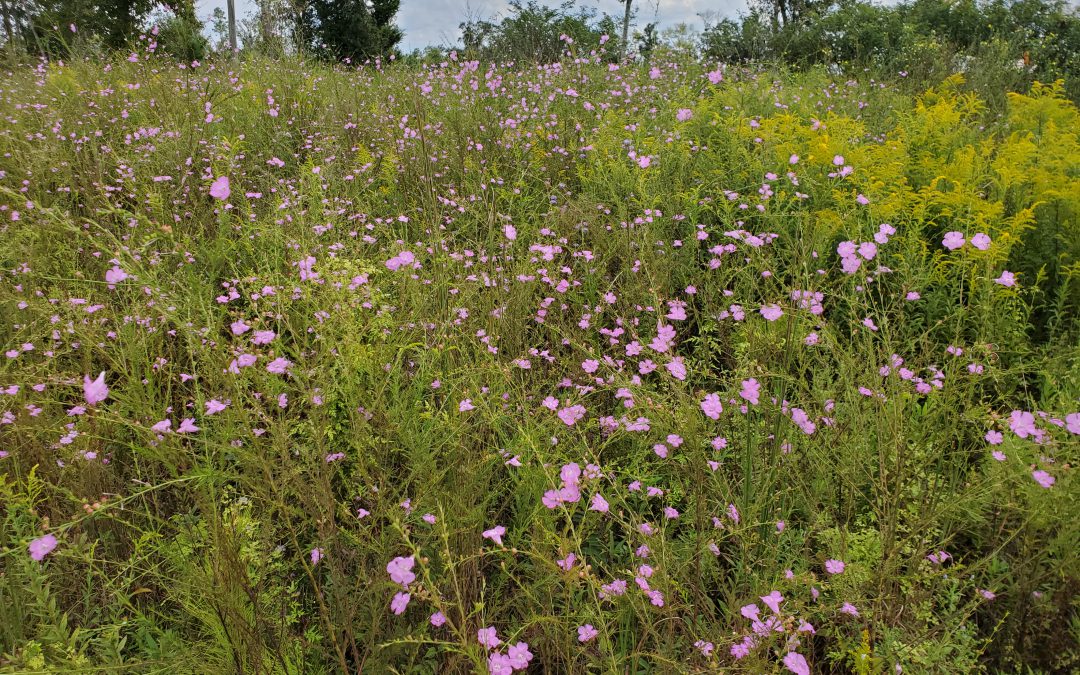
by Daniel J. Leonard | Oct 7, 2021
Fall is the absolute best season for wildflower watching in the Panhandle! When mid-September rolls around and the long dog days of summer finally shorten, giving way to drier air and cooler nights, northwest Florida experiences a wildflower color explosion. From the brilliant yellow of Swamp Sunflower and Goldenrod, to the soothing blue of Mistflower, and the white-on-gold of Spanish Needles, there is no shortage of sights to see from now until frost. But, in my opinion, the stars of the fall show are the currently flowering, beautiful pink blooms of False Foxglove (Agalinus spp.).
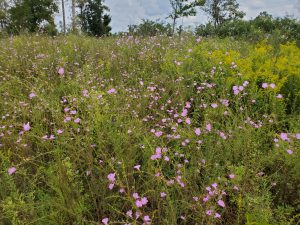
False Foxglove in a Calhoun County natural area. Photo courtesy of Daniel Leonard.
Named for the appearance of their flowers, which bear a resemblance to the northern favorite Foxglove (Digitalis spp.), “False Foxglove” is actually the common name of several closely related species of parasitic plants in the genus Agalinus that are difficult to distinguish by all but the keenest of botanists. Regardless of which species you may see, False Foxglove is an unusual and important Florida native plant. Emerging from seed each spring in the Panhandle, plants grow quickly through the summer to a mature height of 3-5’. During this time, False Foxglove is about as inconspicuous a plant as grows. Consisting of a wispy thin stem with very small, narrow leaves, plants remain hidden in the flatwoods and sand hill landscapes that they inhabit. However, when those aforementioned shorter September days arrive, False Foxglove explodes into flower sporting sprays of dozens of light purple to pink tubular-shaped flowers that remain until frost ends the season.
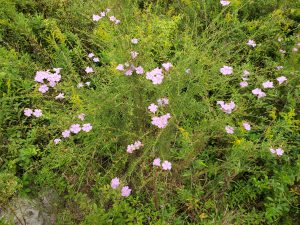
False Foxglove flowering in a Calhoun County natural area. Photo courtesy of Daniel Leonard.
In addition to being unmatched in flower, False Foxglove also plays several important ecological roles in Florida’s natural areas. First, False Foxglove’s relatively large, tubular-shaped flowers are the preferred nectar sources for the larger-sized native solitary and bumble bees present in the Panhandle, though all manner of generalist bees and butterflies will also visit for a quick sip. Second, False Foxglove is the primary host plant for the unique Common Buckeye butterfly. One of the most easily recognizable butterflies due to the large “eye” spots on their wings, Common Buckeye larvae (caterpillars), feed on False Foxglove foliage during the summer before emerging as adults and adding to the fall spectacle. Finally, False Foxglove is an important indicator of a healthy native ecosystem. As a parasitic plant, False Foxglove obtains nutrients and energy by photosynthesis AND by using specialized roots to tap into the roots of nearby suitable hosts (native grasses and other plants). As both False Foxglove and its parasitic host plants prefer to grow in the sunny, fire-exposed areas pine flatwoods and sand ridges that characterized pre-settlement Florida, you can be fairly confident that if you see a natural area with an abundance of False Foxglove in flower, that spot is in good ecological shape!
The Florida Panhandle is nearly unmatched in its fall wildflower diversity and False Foxglove plays a critical part in the show. From its stunning flowers to its important ecological roles, one would be hard-pressed to find a more unique native wildflower! For more information about False Foxglove and other Florida native wildflowers, contact us at the UF/IFAS Calhoun County Extension office.
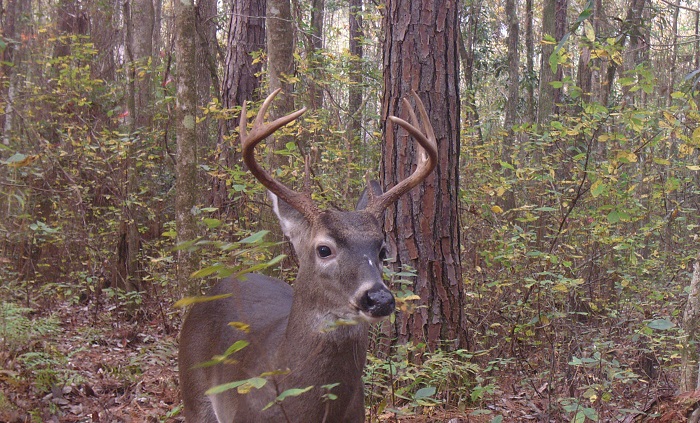
by Mark Mauldin | Apr 9, 2021
Spring can be a busy time of year for those of us who are interested in improving wildlife habitat on the property we own/manage. Spring is when we start many efforts that will pay-off in the fall. If you are a weekend warrior land manager like me there is always more to do than there are available Saturdays to get it done. The following comments are simple reminders about some habitat management activities that should be moving to the top of your to-do list this time of year.
Aquatic Weed Management – If you had problematic weeds in you pond last summer, chances are you will have them again this summer. NOW (spring) is the time to start controlling aquatic weeds. The later into the summer you wait the worse the weeds will get and the more difficult they will be to control. The risk of a fish-kill associated with aquatic weed control also increases as water temperatures and the total biomass of the weeds go up. Springtime is “Just Right” for Using Aquatic Herbicides
Cogongrass Control – Spring is actually the second-best time of year to treat cogongrass, fall (late September until first frost) is the BEST time. That said, ideally cogongrass will be treated with herbicide every six months, making spring and fall important. When treating spring regrowth make sure that there are green leaves at least one foot long before spraying. Spring is also an excellent time of year to identify cogongrass patches – the cottony, white blooms are easy to spot. Identify Cogongrass Now – Look for the Seedheads; Cogongrass – Now is the Best Time to Start Control
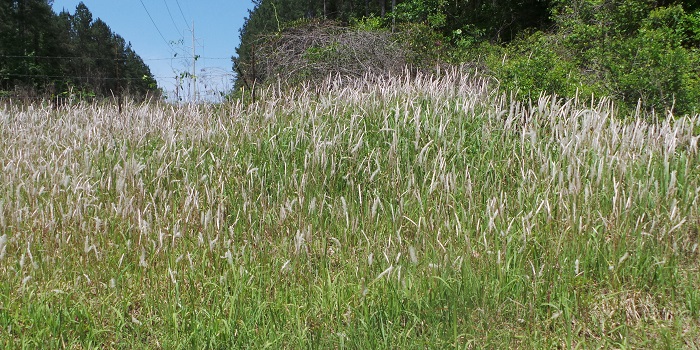
Cogongrass seedheads are easily spotted this time of year.
Photo credit: Mark Mauldin
Warm-Season Food Pots – There is a great deal of variation in when warm season food plots can be planted. Assuming warm-season plots will be panted in the same areas as cool-season plots, the simplest timing strategy is to simply wait for the cool-season plots to play out (a warm, dry May is normally the end of even the best cool-season plot) and then begin preparation for the warm-season plots. This transition period is the best time to deal with soil pH issues (get a soil test) and control weeds. Seed for many varieties of warm-season legumes (which should be the bulk of your plantings) can be somewhat hard to find, so start looking now. If you start early you can find what you want, and not just take whatever the feed store has. Warm Season Food Plots for White-tailed Deer

Deer Feeders – Per FWC regulations deer feeders need to be in continual operation for at least six months prior to hunting over them. Archery season in the Panhandle will start in mid-October, meaning deer feeders need to be up and running by mid-April to be legal to hunt opening morning. If you have plans to move or add feeders to your property, you’d better get to it pretty soon. FWC Feeding Game
Dove Fields – The first phase of dove season will begin in late September. When you look at the “days to maturity” for the various crops in the chart below you might feel like you’ve got plenty of time. While that may be true, don’t forget that not only do you need time for the crop to mature, but also for seeds to begin to drop and birds to find them all before the first phase begins. Because doves are particularly fond of feeding on clean ground, controlling weeds is a worthwhile endeavor. If you are planting on “new ground”, applying a non-selective herbicide several weeks before you begin tillage is an important first step to a clean field, but it adds more time to the process. As mentioned above, it’s always pertinent to start sourcing seed well in advance of your desired planting date. Timing is Crucial for Successful Dove Fields
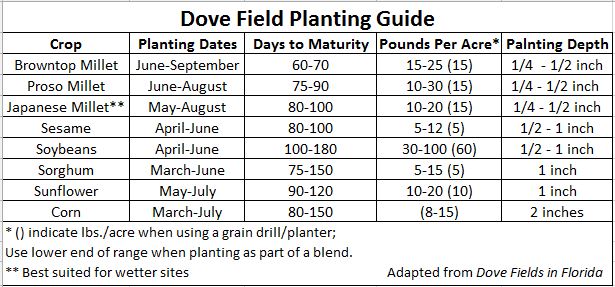
There are many other projects that may be more time sensitive than the ones listed above. These were just a few that have snuck up on me over the years. The links in each section will provide more detailed information on the topics. If you have questions about anything addressed in the article feel free to contact me or your county’s UF/IFAS Extension Natural Resource Agent.
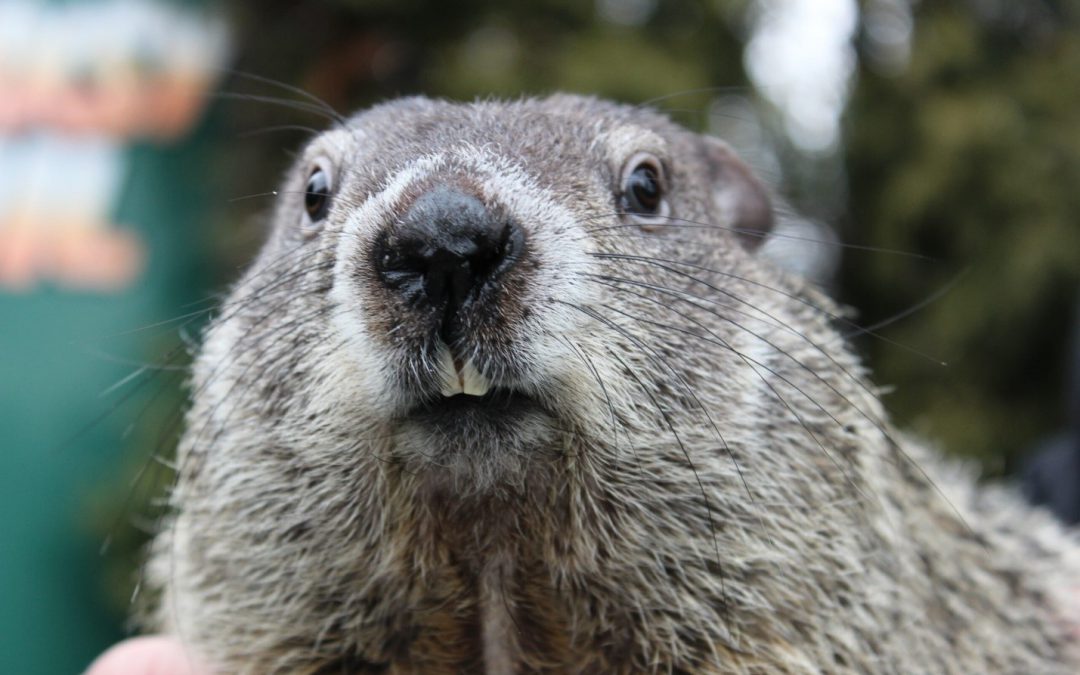
by Sheila Dunning | Jan 28, 2021
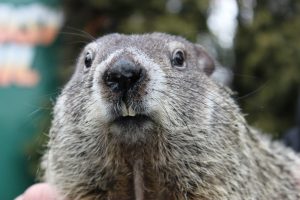
Groundhog
Groundhog Day is celebrated every year on February 2, and in 2021, it falls on Tuesday. It’s a day when townsfolk in Punxsutawney, Pennsylvania, gather in Gobbler’s Knob to watch as an unsuspecting furry marmot is plucked from his burrow to predict the weather for the rest of the winter. If Phil does see his shadow (meaning the Sun is shining), winter will not end early, and we’ll have another 6 weeks left of it. If Phil doesn’t see his shadow (cloudy) we’ll have an early spring. Since Punxsutawney Phil first began prognosticating the weather back in 1887, he has predicted an early end to winter
only 18 times. However, his accuracy rate is only 39%. In the south, we call also defer to General Beauregard Lee in Atlanta, Georgia or Pardon Me Pete in Tampa, Florida.
But, what is a groundhog? Are gophers and groundhogs the same animal? Despite their similar appearances and burrowing habits, groundhogs and gophers don’t have a whole lot in common—they don’t even belong to the same family. For example, gophers belong to the family Geomyidae, a group that includes pocket gophers, kangaroo rats, and pocket mice. Groundhogs, meanwhile, are members of the Sciuridae (meaning shadow-tail) family and belong to the genus Marmota. Marmots are diurnal ground squirrels. There are 15 species of marmot, and groundhogs are one of them.
Science aside, there are plenty of other visible differences between the two animals. Gophers, for example, have hairless tails, protruding yellow or brownish teeth, and fur-lined cheek pockets for storing food—all traits that make them different from groundhogs. The feet of gophers are often pink, while groundhogs have brown or black feet. And while the tiny gopher tends to weigh around two or so pounds, groundhogs can grow to around 13 pounds.
While both types of rodent eat mostly vegetation, gophers prefer roots and tubers while groundhogs like vegetation and fruits. This means that the former animals rarely emerge from their burrows, while the latter are more commonly seen out and about. In the spring, gophers make what is called eskers, or winding mounds of soil. The southeastern pocket gopher, Geomys pinetis, is also known as the sandy-mounder in Florida.
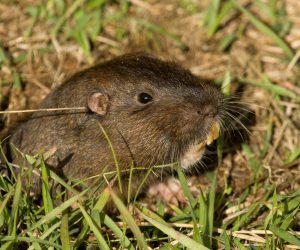
Southeastern Pocket Gopher
The southeastern pocket gopher is tan to gray-brown in color. The feet and naked tail are light colored. The southeastern pocket gopher requires deep, well-drained sandy soils. It is most abundant in longleaf pine/turkey oak sandhill habitats, but it is also found in coastal strand, sand pine scrub, and upland hammock habitats.
Gophers dig extensive tunnel systems and are rarely seen on the surface. The average tunnel length is 145 feet (44 m) and at least one tunnel was followed for 525 feet (159 m). The soil gophers remove while digging their tunnels is pushed to the surface to form the characteristic rows of sand mounds. Mound building seems to be more intense during the cooler months, especially spring and fall, and slower in the summer. In the spring, pocket gophers push up 1-3 mounds per day. Based on mound construction, gophers seem to be more active at night and around dusk and dawn, but they may be active at any time of day.
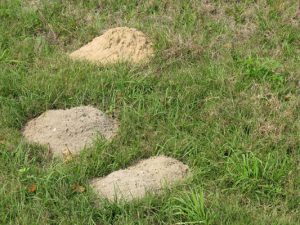
Pocket Gopher Mounds
Many amphibians and reptiles use pocket gopher mounds as homes, including Florida’s unique mole skinks. The pocket gopher tunnels themselves serve as habitat for many unique invertebrates found nowhere else.
So, groundhogs for guesses on the arrival of spring. But, when the pocket gophers are making lots of mounds, spring is truly here. Happy Groundhog’s Day.
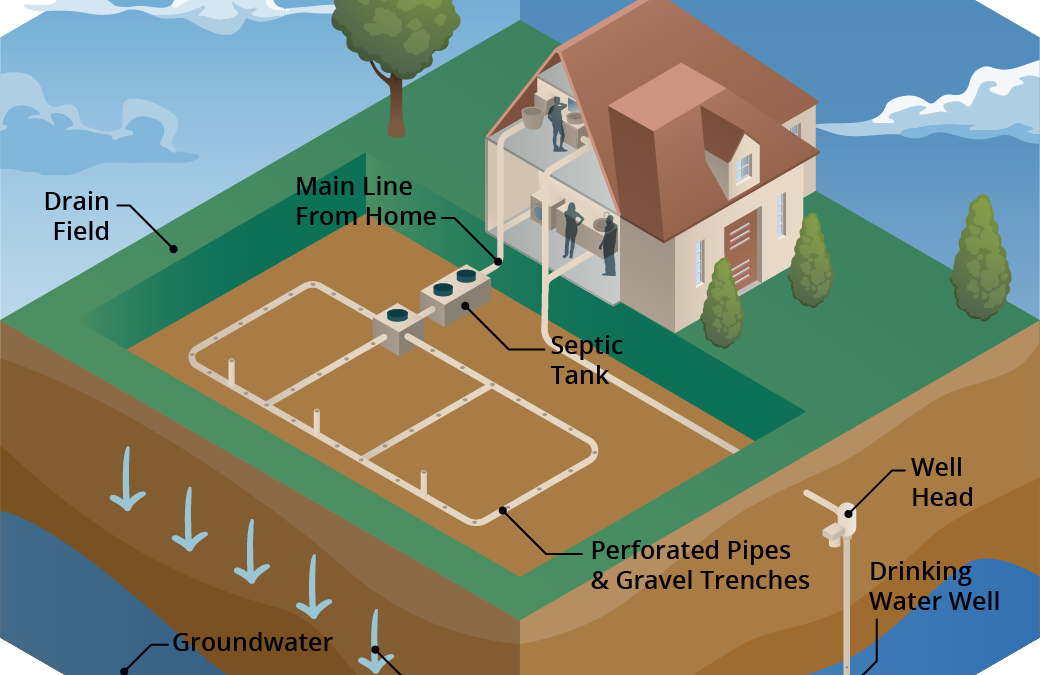
by Andrea Albertin | Jan 28, 2021
Senate Bill 712 ‘The Clean Waterways Act’ was signed into Florida law on June 30, 2020. The purpose of the bill is to better protect Florida’s water resources and focuses on minimizing the impact of known sources of nutrient pollution. These sources include septic systems, wastewater treatment plants, stormwater runoff as well as fertilizer used in agricultural production.

Senate Bill 712 focuses on protecting Florida’s water resources such as Jackson Blue Springs/Merritt’s Mill Pond, pictured here. Credit: Doug Mayo, UF/IFAS.
What major provisions are included in SB 712?
Primary actions required by SB712 were listed in a news release by Governor Desantis’ staff in June 2020 as:
- Regulation of septic systems as a source of nutrients and transfer of oversight from the Florida Department of Health (DOH) to the Florida Department of Environmental Protection (DEP).
- Contingency plans for power outages to minimize discharges of untreated wastewater for all sewage disposal facilities.
- Provision of financial records from all sanitary sewage disposal facilities so that DEP can ensure funds are being allocated to infrastructure upgrades, repairs, and maintenance that prevent systems from falling into states of disrepair.
- Detailed documentation of fertilizer use by agricultural operations to ensure compliance with Best Management Practices (BMPs) and aid in evaluation of their effectiveness.
- Updated stormwater rules and design criteria to improve the performance of stormwater systems statewide to specifically address nutrients.
How does the bill impact septic system regulation?
The transfer of the Onsite Sewage Program (OSP) (commonly known as the septic system program) from DOH to DEP becomes effective on July 1, 2021. So far, DOH and DEP submitted a report to the Governor and Legislature at the end of 2020 with recommendations on how this transfer should take place. They recommend that county DOH employees working in the OSP continue implementing the program as DOH-employees, but that the onsite sewage program office in the State Health Office transfer to DEP and continue working from there. DOH created an OSP Transfer web page where updates and documents related to the transfer are posted.
How does the bill impact agricultural operations?
SB 712 affects all landowners and producers enrolled in the Florida Department of Agriculture and Consumer Services (FDACS) BMP Program. Under this bill:
- Every two years FDACS will make an onsite implementation verification (IV) visit to land enrolled in the BMP program to ensure that BMPs are properly implemented. These visits will be coordinated between the producer and field staff from FDACS Office of Agriculture and Water Policy (OAWP).
- During these visits (and as they have done in the past), field staff will review records that producers are required to keep under the BMP program.
- Field staff will also collect information on nitrogen and phosphorus application. FDACS has created a specific form, the Nutrient Application Record Keeping Form or NARF where producers will record quantities of N and P applied. FDACS field staff will retain a copy of the NARF during the IV visit.
FDACS-OAWP prepared a thorough document with responses to SB 712 Frequently Asked Questions (FAQ’s). It includes responses to questions about site visits, the NARF and record keeping, why FDACS is collecting nutrient records and what will be done with this information. The fertilizer records collected are not public information, and are protected under the public records exemption (Section 403.067 Florida Statutes). For areas that fall under a Basin Management Action Plan (like the Jackson Blue and Wakulla Springs Basins in the Florida Panhandle), FDACS will combine the nitrogen and phosphorus application data from all enrolled properties (total pounds of N and P applied within the BMAP). It will then send the aggregated nutrient application information to FDEP.
Details of how all aspects of SB 712 will be implemented are still being worked out and we should continue to hear more in the coming months.
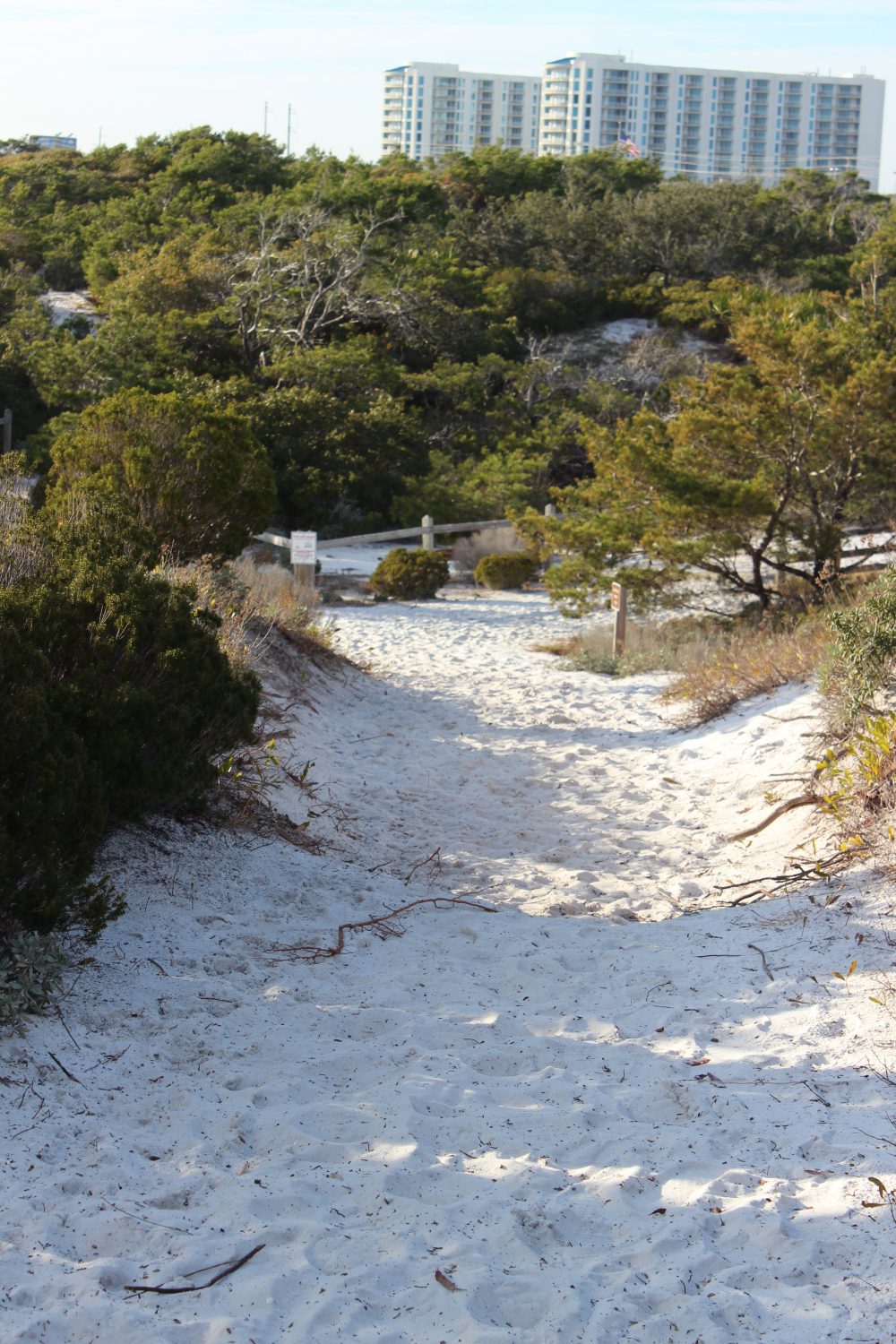
by Rick O'Connor | Jan 8, 2021
It’s winter…
The sky is clear, the humidity is low, the bugs are gone, and the highs are in the 60s – most days. These are perfect days to get outside and enjoy. But the water is cold and you do not want to get wet – most days. And with COVID hanging around we do not want to go where there are crowds. Where can I go to enjoy this great weather, the outdoors, but stay safe?

As the summer heat fades, the weather is great for hiking! Photo credit: Abbie Seales
Hiking…
My wife and I have already made several hikes this winter and have enjoyed each one. Each panhandle county has several hiking trails you could visit. In our county there are city, county, state, and federal trails to choose from. The Florida Trail begins in Escambia County, at Ft. Pickens on Santa Rosa Island, and dissects each county in the panhandle on its way to the Everglades. You could find the section running through yours and hike that for a day. Community parks, our local university, state and national parks, and the water management district, all have trails.
Some are a short loops and easy. Others can be 20 plus miles, but you do not have to hike it all. Go for as long as you like and then return to the car. Some are handicapped access, some have paved sections, or boardwalks. Some go along waterways and the water is so clear in the winter that you can see to the bottom. Many meander through both open areas and areas with a closed tree canopies.
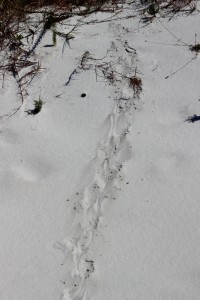
The tracks of the very common armadillo.
Photo: Molly O’Connor
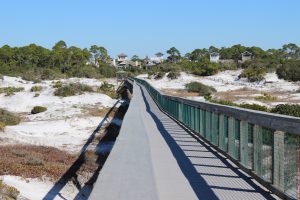
The boardwalk of Deer Lake State Park off of Highway 30-A. you can see the tracks of several types of mammals who pass under at night.
Being winter, the wildlife viewing may be less. The “warm bloods” are moving – birds and mammals. Actually, the birds are everywhere, it is a great time to go birding if you like that. Mammals are still more active at dawn dusk, but their tracks are everywhere. We have seen raccoon, coyote, and deer on many of our hikes. But the insects are down as well. We have not had a yellow fly or mosquito gives us a problem yet. Some fear snakes, we actually like the see them, but we have not. Many will come out of their dens when the days warm and the sun is out to bask for a bit before retreating back into their lair. You might feel more comfortable hiking knowing the chance of an encounter one this time of year is much less.
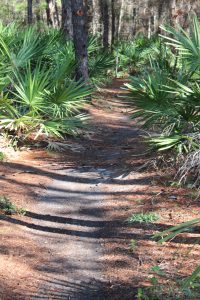
One of the many Florida State Forest trails in South Walton.
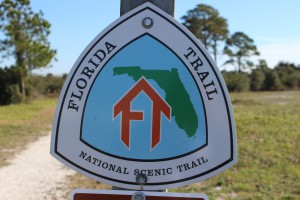
The Florida Trail extends (in sections) over 1,300 miles from Ft. Pickens to the Florida Everglades. It begins at this point.
But the views are great and the photography excellent. Some mornings we have had fog issues, but it quickly lifts, and the bay is often slick as glass with pelicans, loons, and cormorants paddling around. These have made for some great photos.
Things to consider for your hike.
Good shoes. Many of the trails we have hiked have had wet and muddy sections.
Temperature. There can be big swings when going from open sunny areas to under the tree canopies. Wear clothes in layers and have a backpack that can hold what you want to take off. Some like to wear the fleece vests so they do not have to put on/remove as they hike.
Water. I bring at least 32 ounces. It is not hot, but water is still needed.
Snacks. Always a plus. I always miss them when I do not have them.
Camera. Again, the scenery and the birds are really good right now.
The best thing is that you are getting outside, getting exercise, and getting away from the crazy world that is going on right now. Take a “mind break” and take a hike.
Here are some hikes suggested by hiking guides.
Gulf Islands National Seashore / Ft. Pickens – Florida Trail (Ft. Pickens section) – 2 miles – Pensacola Beach
Blackwater State Forest – Jackson Red Ground Trail – 21 miles – near Munson FL
Falling Waters State Park – Falls, Sinkhole, and Wiregrass Trail – ~ 1 mile – near Chipley on I-10
Grayton Beach State Park – Dune Forest Trail – < 1 mile – 30-A in Walton County
T.H. Stone Memorial St. Joseph Peninsula State Park – Beach Walk and Wilderness Preserve Trail – ~ 9 miles – near Port St. Joe FL
Apalachicola Bluffs and Ravine Preserve – Garden of Eden Trail – 4 mile loop – Hwy 12 near Bristol FL
Torreya State Park – Torreya River Bluff Loop Trail – 7 mile loop – Hwy 271 near Bristol
Leon Sinks Geological Area – Sinkhole and Gumswamp Trail – 3 mile loop – US 319 near Tallahassee
Edward Ball Wakulla Springs State Park – Sally Ward Springs and Hammock Trails – 2.5 miles out and back – Hwy 20 near Wakulla FL
St. Marks National Wildlife Refuge – Stoney Bayou Trail – ~ 6 miles – CR 59 near Gulf of Mexico
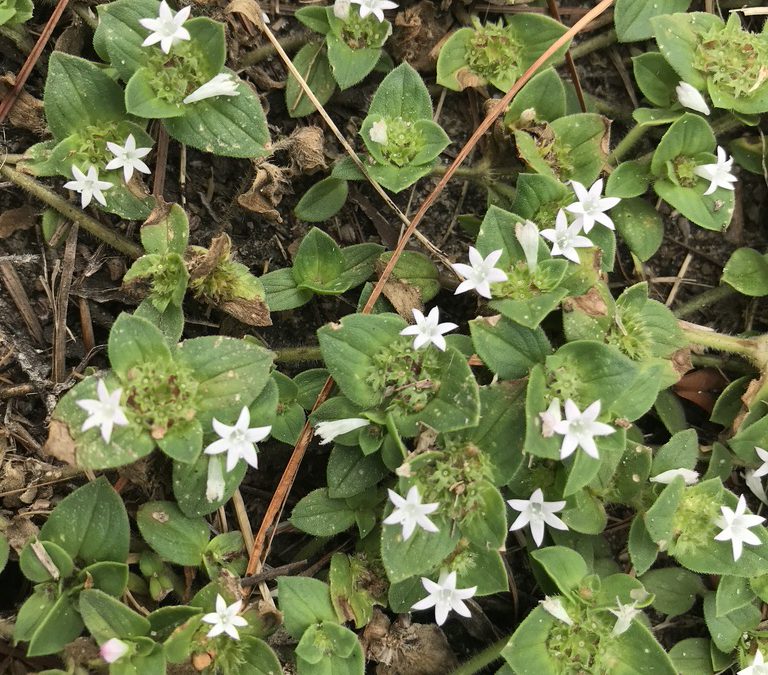
by Laura Tiu | Dec 3, 2020
Fall is such a spectacular time in the Florida Panhandle. The crowds are gone and the thermometer rests at a pleasant 50-70-something degrees. It is the perfect time of year to enjoy our amazing environment. Nature has a magical way of boosting our energy levels and immune systems and improving mood and focus. We can all use a heaping helping of that right now.
So where do you start? Here are some ideas.
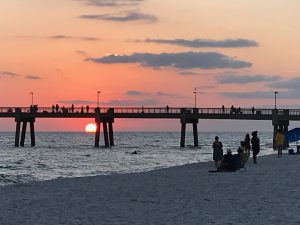 Take in a sunrise or sunset. The beach is often one of the best places to do this, but anywhere will do. Last weekend, I was at the Okaloosa Island Boardwalk and Pier and the sunset was magnificent. While there, take a walk along the beach, let the cool sand squish between your toes and discover what might be hiding in the wrack. The wrack is that line of seaweed deposited after high tide. Upon close inspection, it contains many treasures including seagrasses, sponges, shells, worm tubes, small crabs and other oddities.
Take in a sunrise or sunset. The beach is often one of the best places to do this, but anywhere will do. Last weekend, I was at the Okaloosa Island Boardwalk and Pier and the sunset was magnificent. While there, take a walk along the beach, let the cool sand squish between your toes and discover what might be hiding in the wrack. The wrack is that line of seaweed deposited after high tide. Upon close inspection, it contains many treasures including seagrasses, sponges, shells, worm tubes, small crabs and other oddities.
Take a nature hike. I love the nature trails at our local state and national parks, Henderson Beach, Topsail, Blackwater and Grayton Beach State Parks all have great trails. You may see some wildflowers this time of year. Look for animal tracks and resident birds. You may also see some monarch butterflies on the saltbush, resting as they continue their migration to Mexico.
Check out the springs. Morrison Springs and Ponce de Leon Springs in the state park in Walton County are an easy drive. Sit and enjoy the beauty and peaceful nature that surrounds the springs. Dip your toes in the cool water for a refreshing tingle or jump right in if you dare.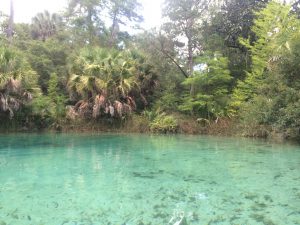
If you have a kayak, canoe or paddle board, it’s a great time to be on the water. Look for migrating shorebirds, schools of fish or pods of dolphins. Did you know we have over 60 dolphins that call the Destin area home year-round? You can often find them cruising in the Choctawhatchee Bay, or hop aboard one of our local dolphin cruises to catch a better glimpse.
Finally, our local fresh seafood is available year-round. Plan a picnic with some fresh shrimp or smoked mullet dip. Seafood offers many of the same benefits as time in nature, so double up on all the goodness that fall has to offer. Get outside and get happy!





















 Take in a sunrise or sunset. The beach is often one of the best places to do this, but anywhere will do. Last weekend, I was at the Okaloosa Island Boardwalk and Pier and the sunset was magnificent. While there, take a walk along the beach, let the cool sand squish between your toes and discover what might be hiding in the wrack. The wrack is that line of seaweed deposited after high tide. Upon close inspection, it contains many treasures including seagrasses, sponges, shells, worm tubes, small crabs and other oddities.
Take in a sunrise or sunset. The beach is often one of the best places to do this, but anywhere will do. Last weekend, I was at the Okaloosa Island Boardwalk and Pier and the sunset was magnificent. While there, take a walk along the beach, let the cool sand squish between your toes and discover what might be hiding in the wrack. The wrack is that line of seaweed deposited after high tide. Upon close inspection, it contains many treasures including seagrasses, sponges, shells, worm tubes, small crabs and other oddities.